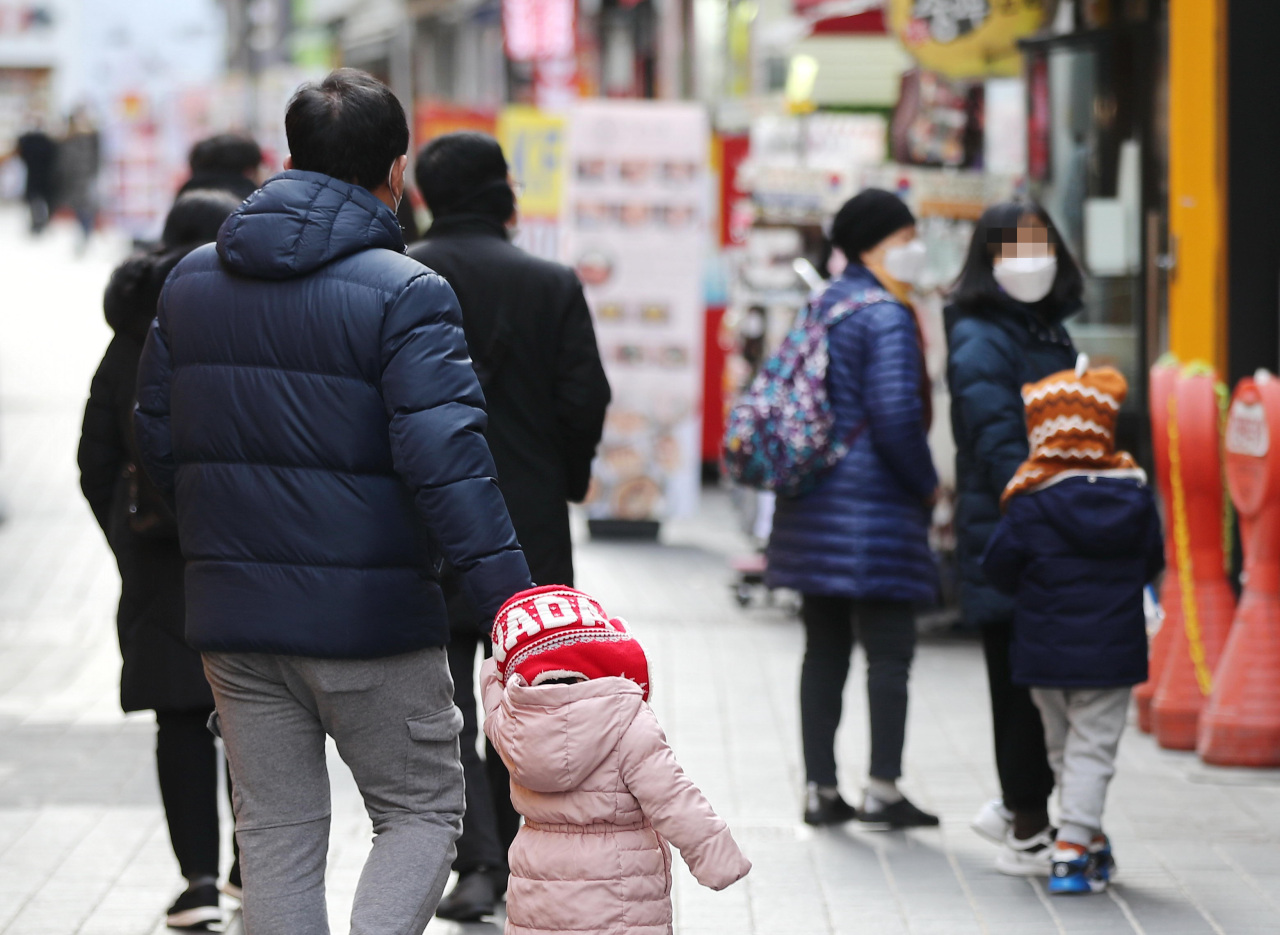Demographic shifts urge Korean insurers to adapt: Moody’s
By Son Ji-hyoungPublished : Jan. 13, 2021 - 13:50

The looming demographic shifts in South Korea are forcing domestic insurers to turn to new growth drivers, as the companies are likely to face flagging sales of their mainstream products and underwriting risks of their new products that lead to inadequate pricing, a report showed Wednesday.
The report by Moody’s Investors Service cited Korea‘s fast aging population as a key attribute, adding that the working-age population is being met with a heavy financial burden to support the country’s growing retiree population.
Korean insurers‘ current mainstream products cater to the working-age population, including mortality protection, auto policies and other individual insurance. These products will soon lose relevance to the growing retiree population, and other products that benefit from having aging population, such as pensions and health products, are unlikely to fully offset the losses with their sales, according to Young Kim, an analyst at Moody’s Investors Service.
“Falling demand for traditional mortality protection products will weaken life insurers‘ profits through lower mortality and morbidity margins, despite temporary benefits from declines in mortality, because people are living longer,” Kim wrote in the report.
Kim added the challenges drive insurers here to turn to the so-called third-sector products that focus on protection against longevity and morbidity risks. But their resulting focus on health insurance products are leaving them exposed to related risks such as medical cost inflation, regulatory intervention and a lack of a claims record, he added, which might lead to inadequate pricing of unseasoned products.
Such challenges appear to add to Korean insurers’ near-term impact due to the introduction of the new accounting standard called IFRS 17, which is expected to result in a swelling debt and the mounting pressure to normalize their balance sheet. Korea is home to some 40 life and nonlife insurance companies.
Estimates show that Korea is expected to show a faster aging trend than neighboring Japan, which is at a more advanced stage of aging demographics.
According to the Organization for Economic Cooperation and Development, those aged 65 and over in Korea will account for 32 percent of the population in 2040, doubling the 2020 figure of 16 percent. This indicates a steeper aging curve than that of Japan, estimated to rise to 38 percent by 2050 from 28 percent in 2019.
The old age dependency ratio, or the ratio between the number of people of pensionable age and the number of people of working age, will jump 2.5 times to 57.2 percent by 2040, from 22.1 percent in 2020 in Korea. In Japan, that ratio is estimated to be at 66.8 percent by 2040 from 49.2 percent in 2020.
By Son Ji-hyoung (consnow@heraldcorp.com)
The report by Moody’s Investors Service cited Korea‘s fast aging population as a key attribute, adding that the working-age population is being met with a heavy financial burden to support the country’s growing retiree population.
Korean insurers‘ current mainstream products cater to the working-age population, including mortality protection, auto policies and other individual insurance. These products will soon lose relevance to the growing retiree population, and other products that benefit from having aging population, such as pensions and health products, are unlikely to fully offset the losses with their sales, according to Young Kim, an analyst at Moody’s Investors Service.
“Falling demand for traditional mortality protection products will weaken life insurers‘ profits through lower mortality and morbidity margins, despite temporary benefits from declines in mortality, because people are living longer,” Kim wrote in the report.
Kim added the challenges drive insurers here to turn to the so-called third-sector products that focus on protection against longevity and morbidity risks. But their resulting focus on health insurance products are leaving them exposed to related risks such as medical cost inflation, regulatory intervention and a lack of a claims record, he added, which might lead to inadequate pricing of unseasoned products.
Such challenges appear to add to Korean insurers’ near-term impact due to the introduction of the new accounting standard called IFRS 17, which is expected to result in a swelling debt and the mounting pressure to normalize their balance sheet. Korea is home to some 40 life and nonlife insurance companies.
Estimates show that Korea is expected to show a faster aging trend than neighboring Japan, which is at a more advanced stage of aging demographics.
According to the Organization for Economic Cooperation and Development, those aged 65 and over in Korea will account for 32 percent of the population in 2040, doubling the 2020 figure of 16 percent. This indicates a steeper aging curve than that of Japan, estimated to rise to 38 percent by 2050 from 28 percent in 2019.
The old age dependency ratio, or the ratio between the number of people of pensionable age and the number of people of working age, will jump 2.5 times to 57.2 percent by 2040, from 22.1 percent in 2020 in Korea. In Japan, that ratio is estimated to be at 66.8 percent by 2040 from 49.2 percent in 2020.
By Son Ji-hyoung (consnow@heraldcorp.com)



















![[Today’s K-pop] BTS pop-up event to come to Seoul](http://res.heraldm.com/phpwas/restmb_idxmake.php?idx=642&simg=/content/image/2024/04/17/20240417050734_0.jpg&u=)